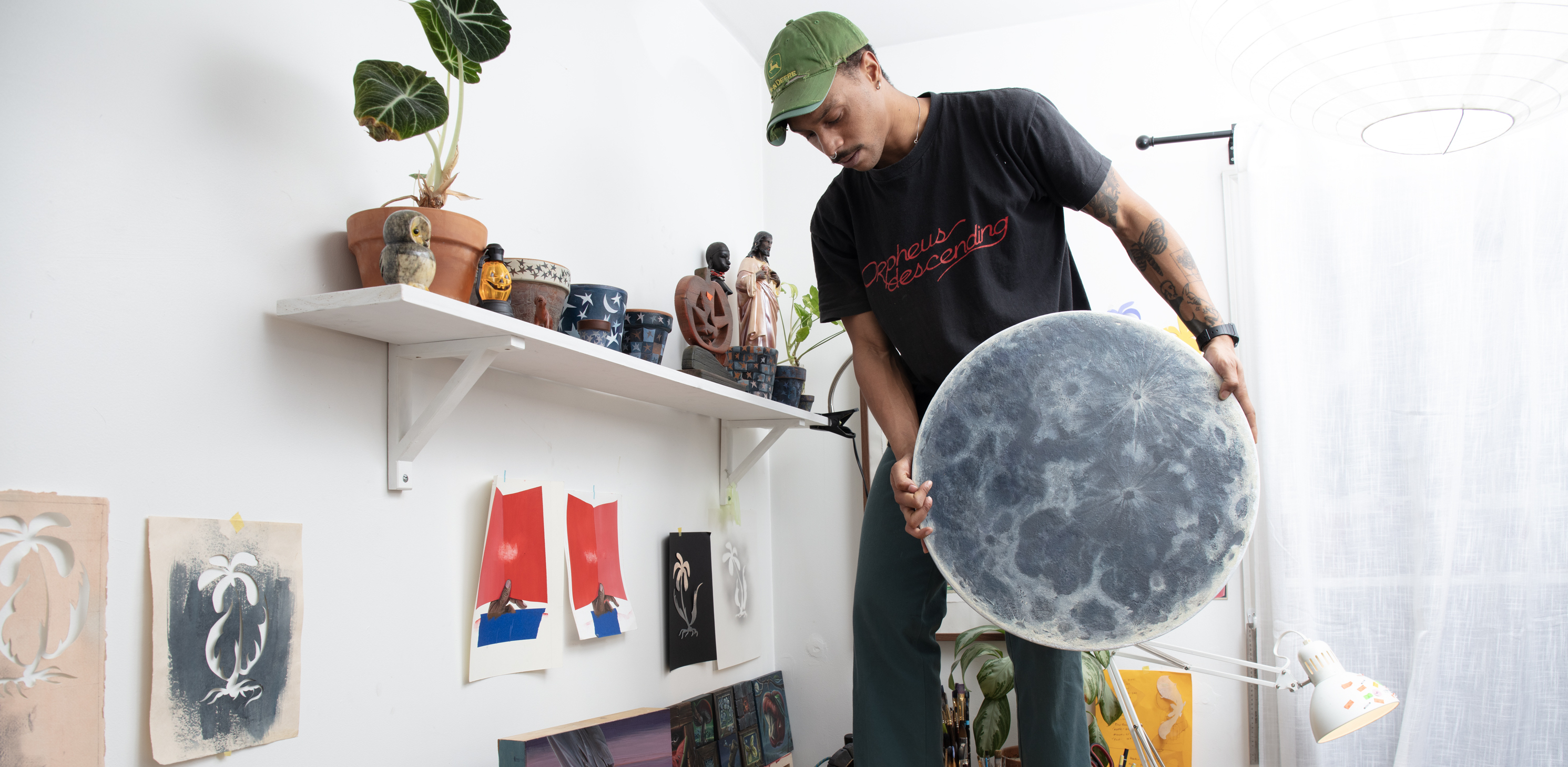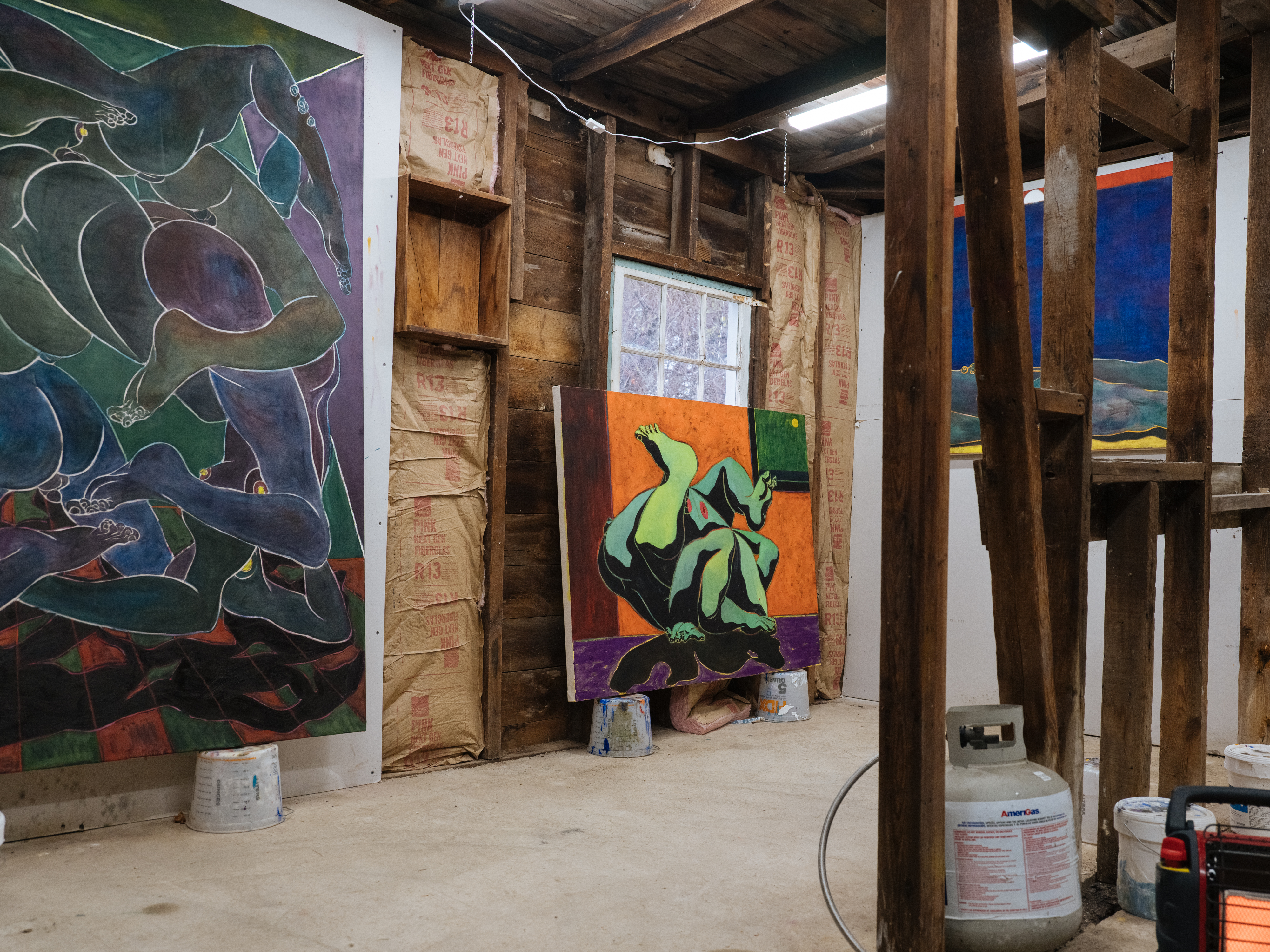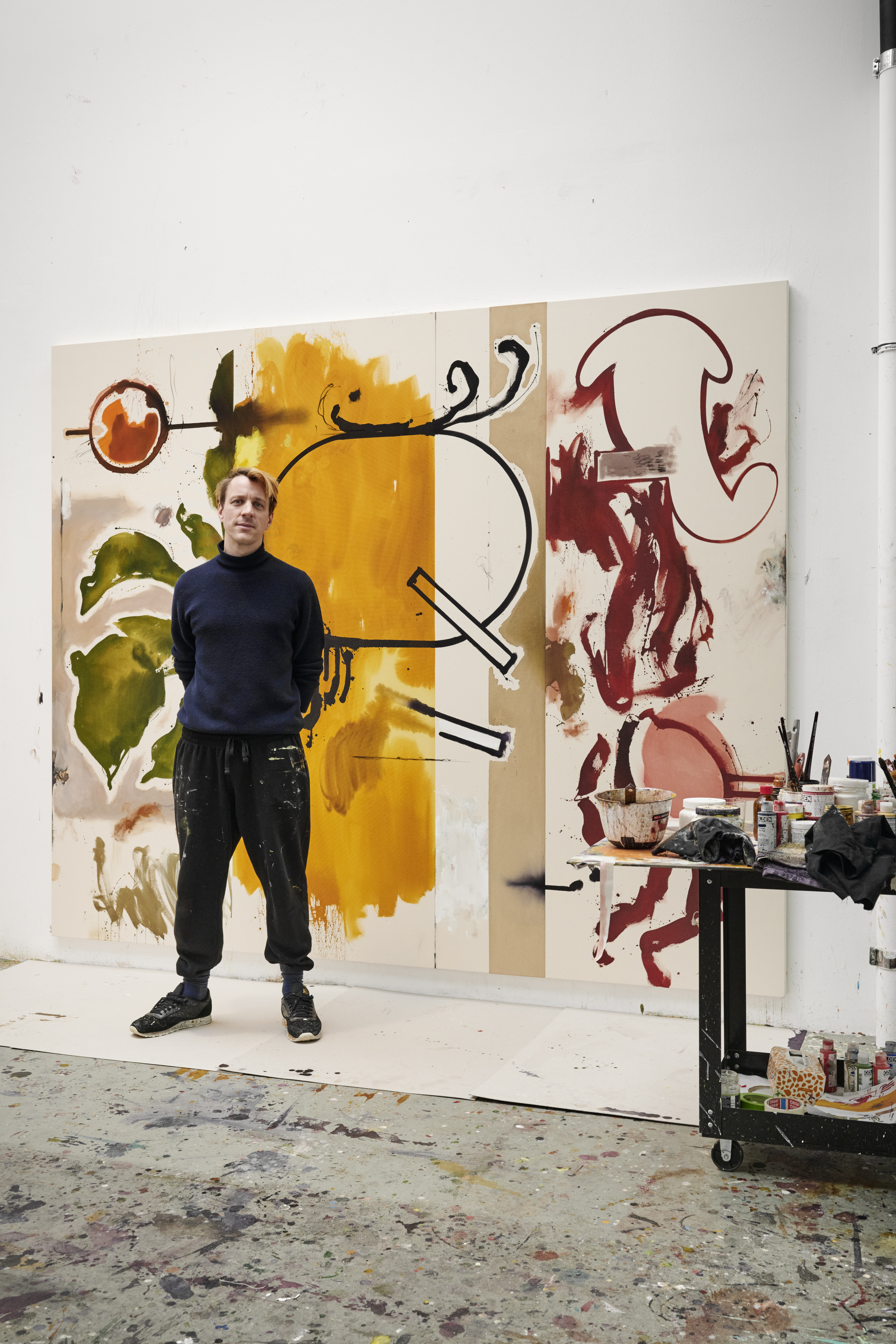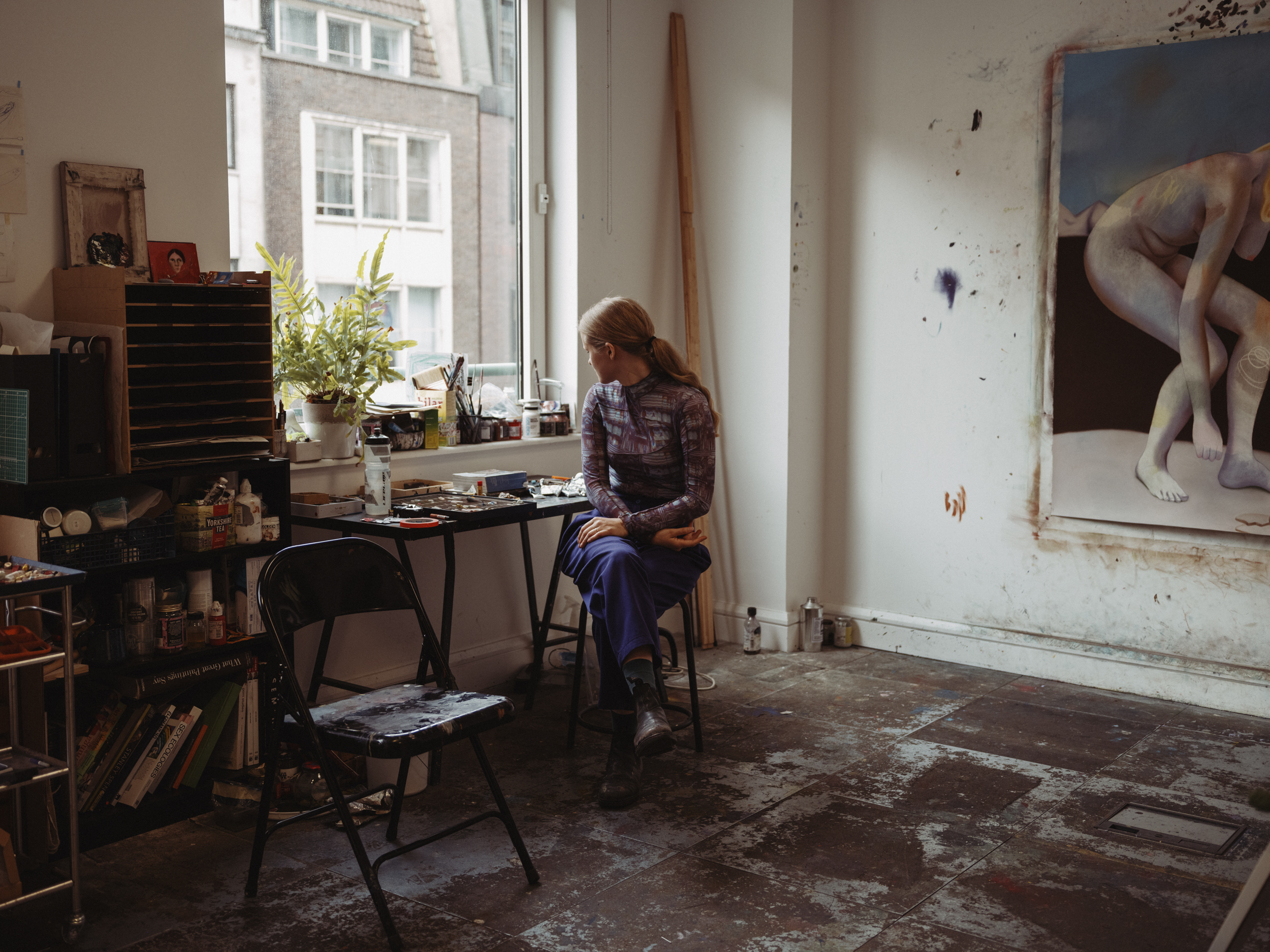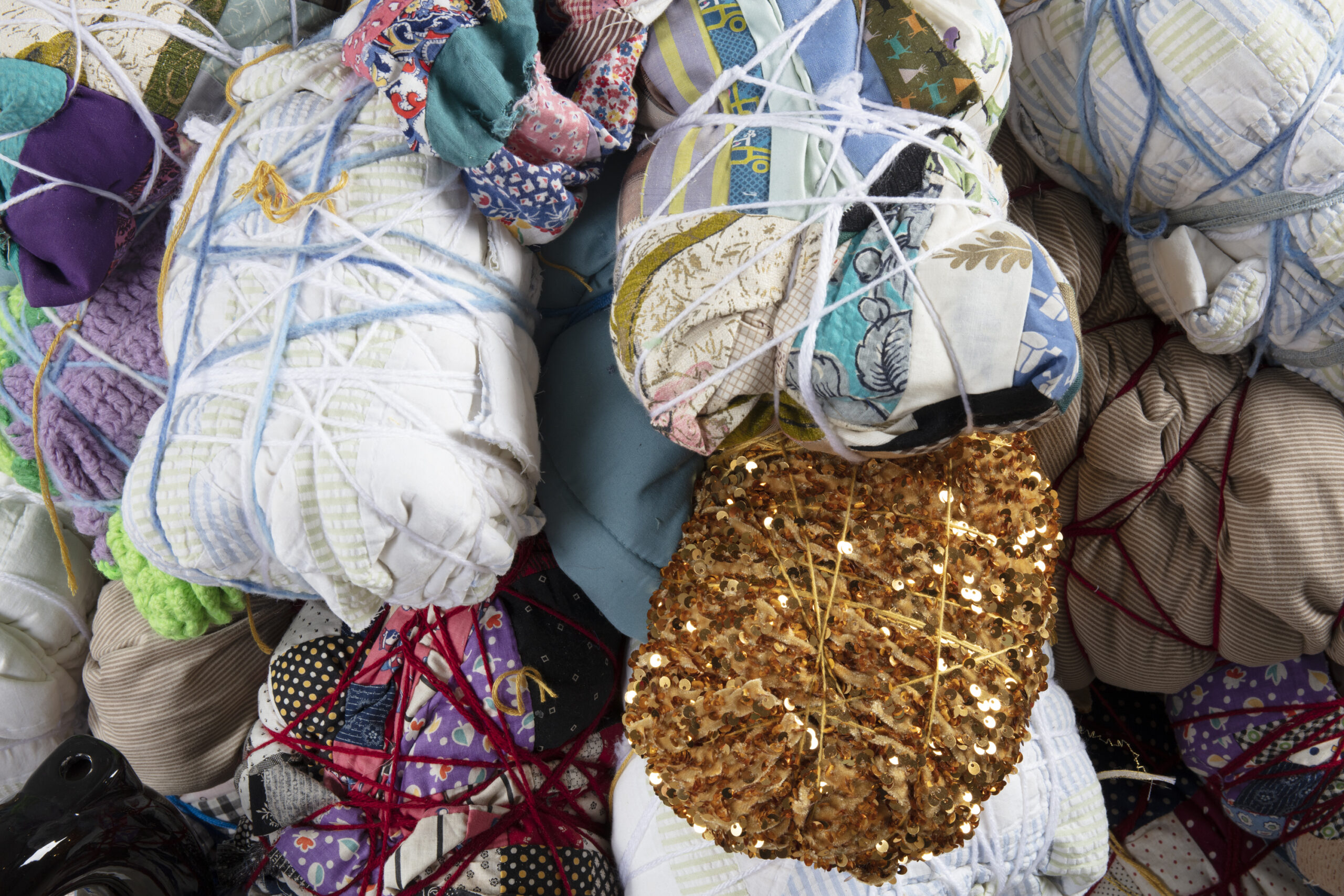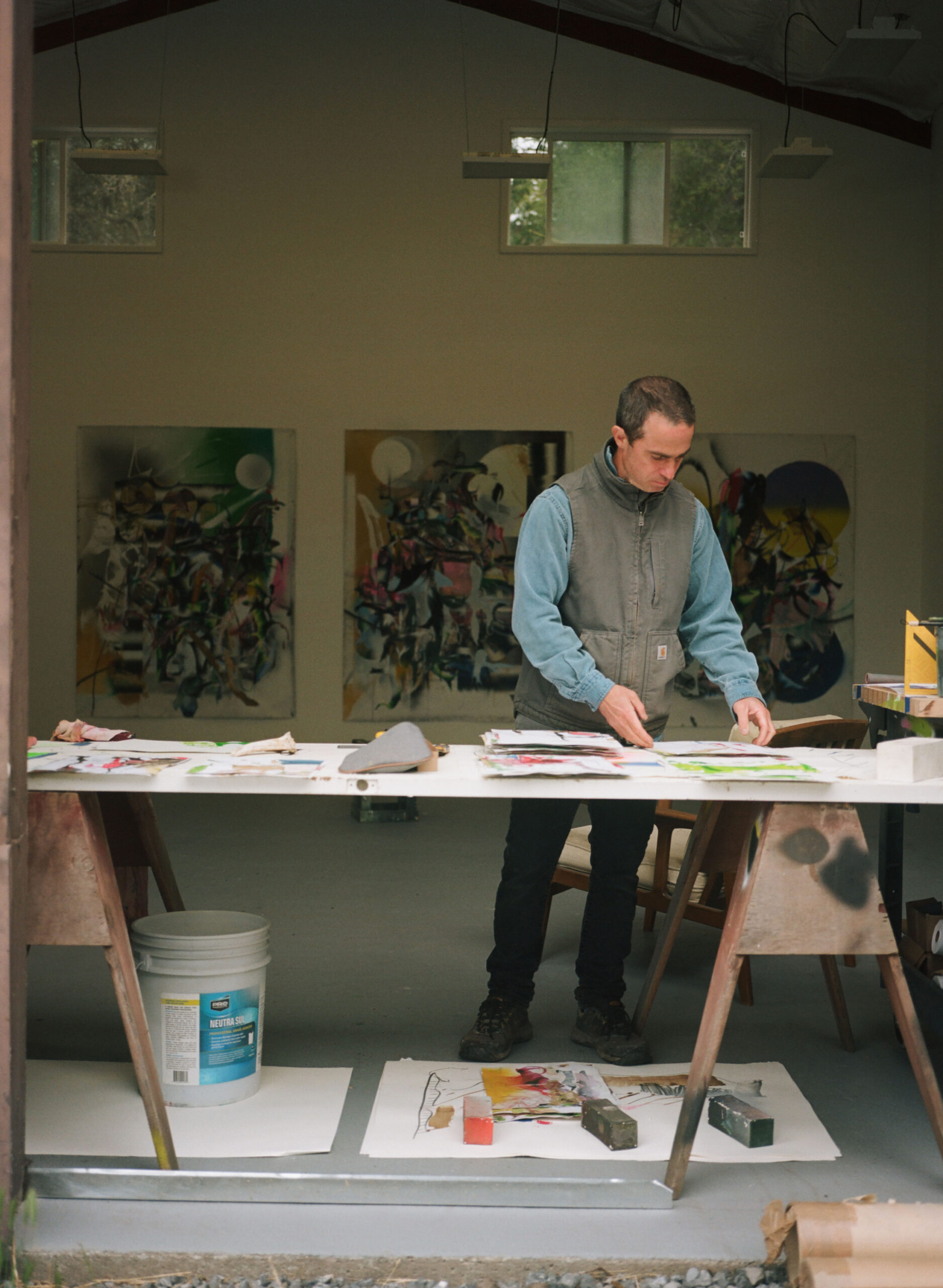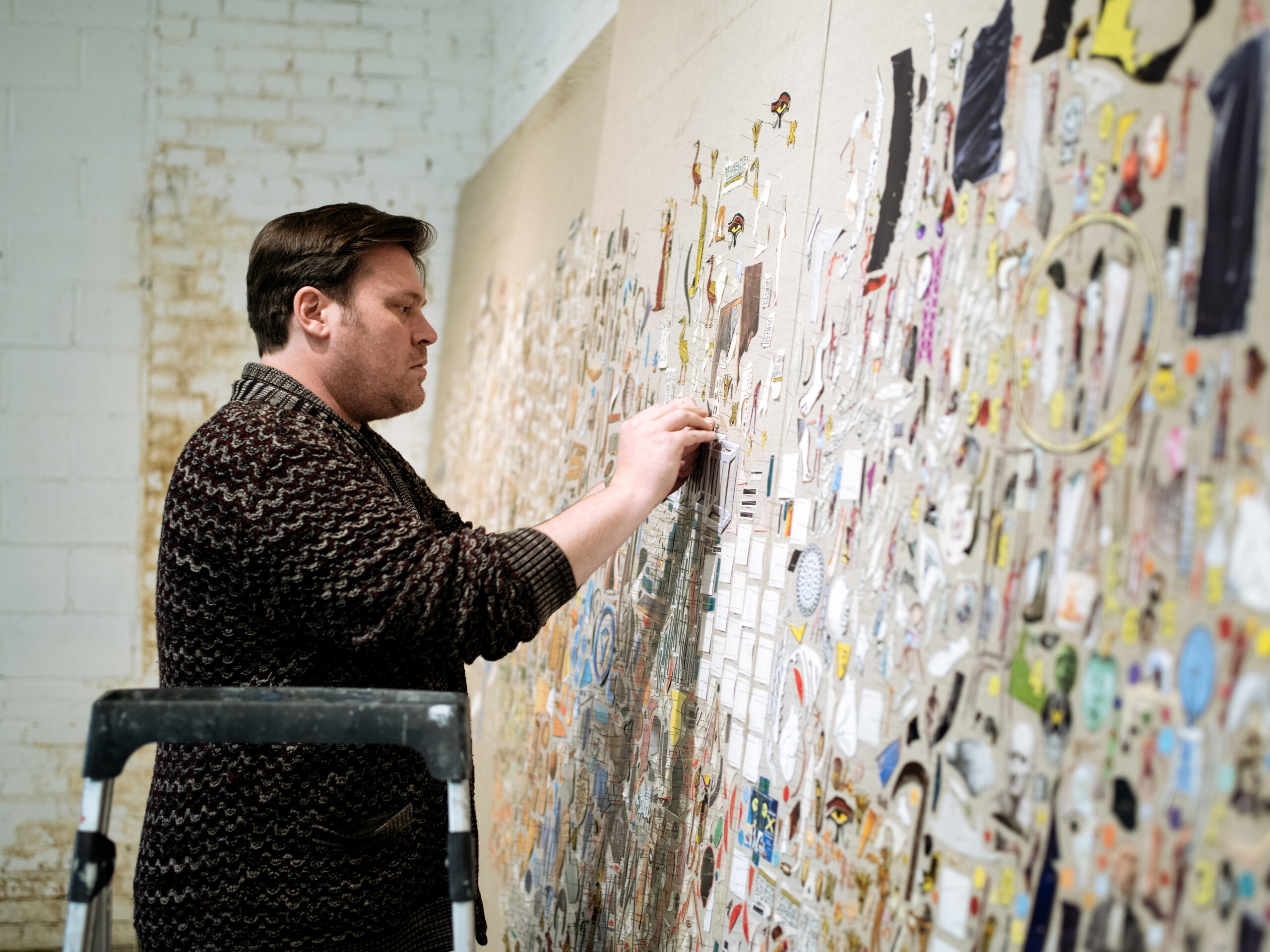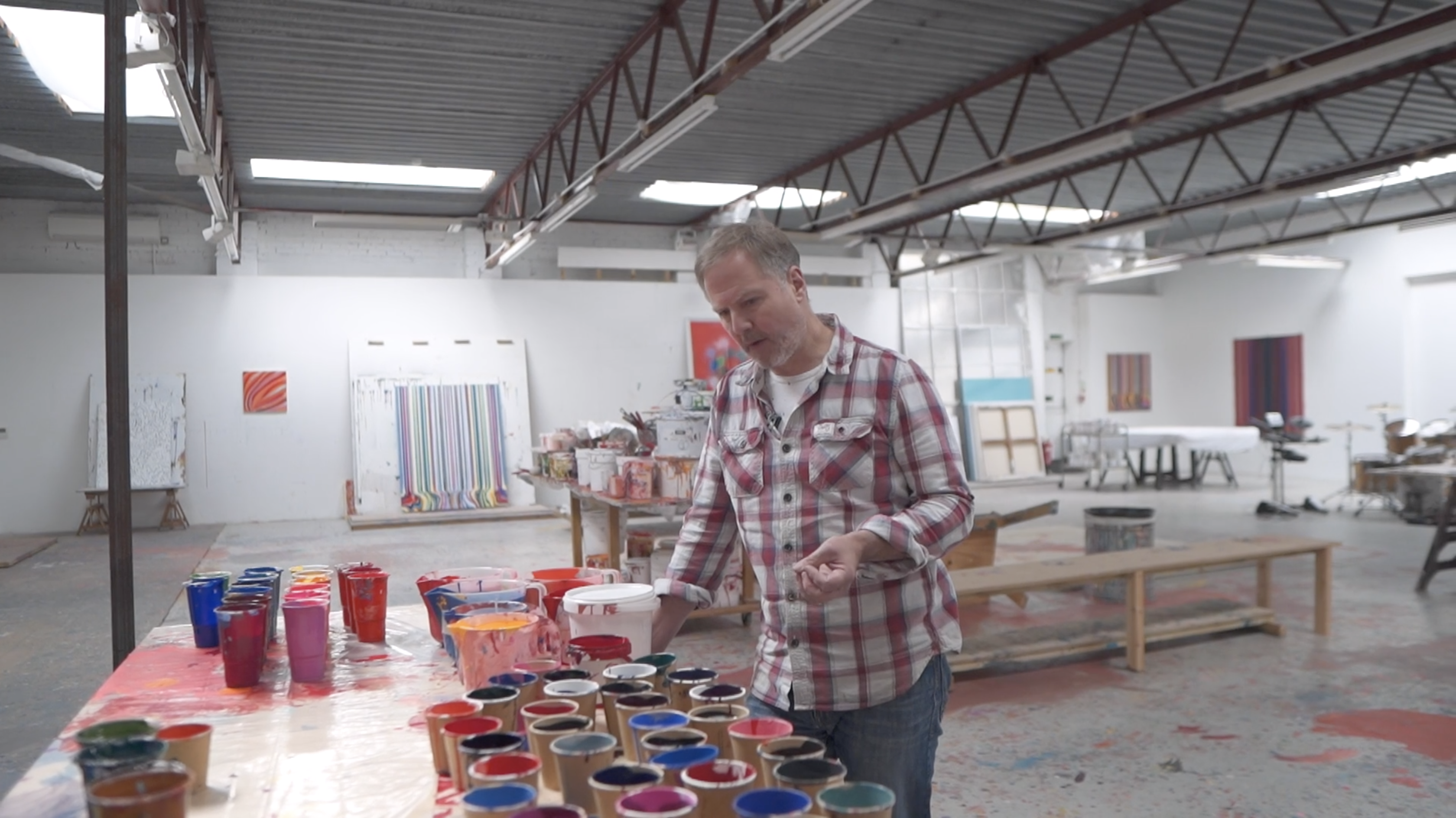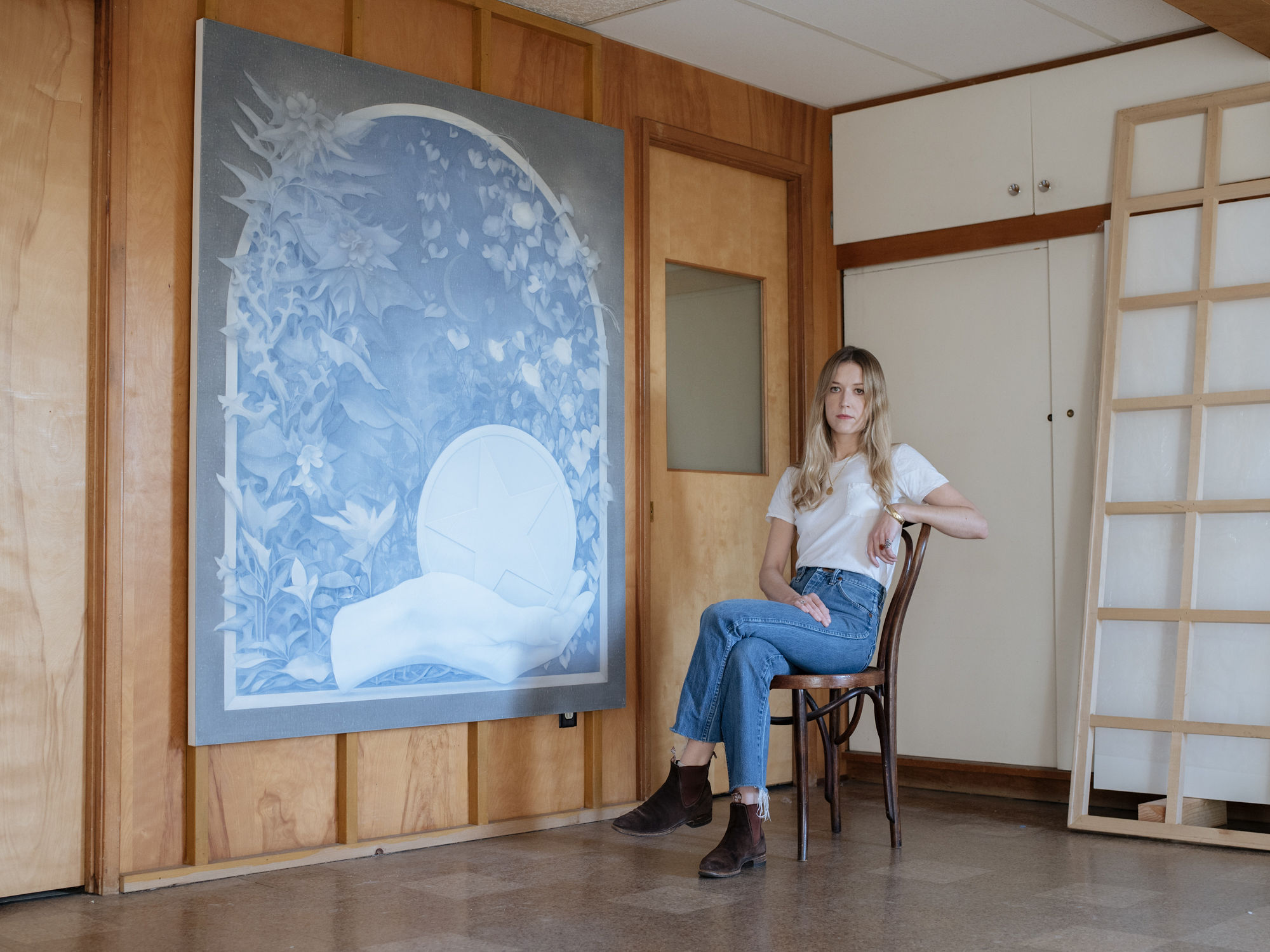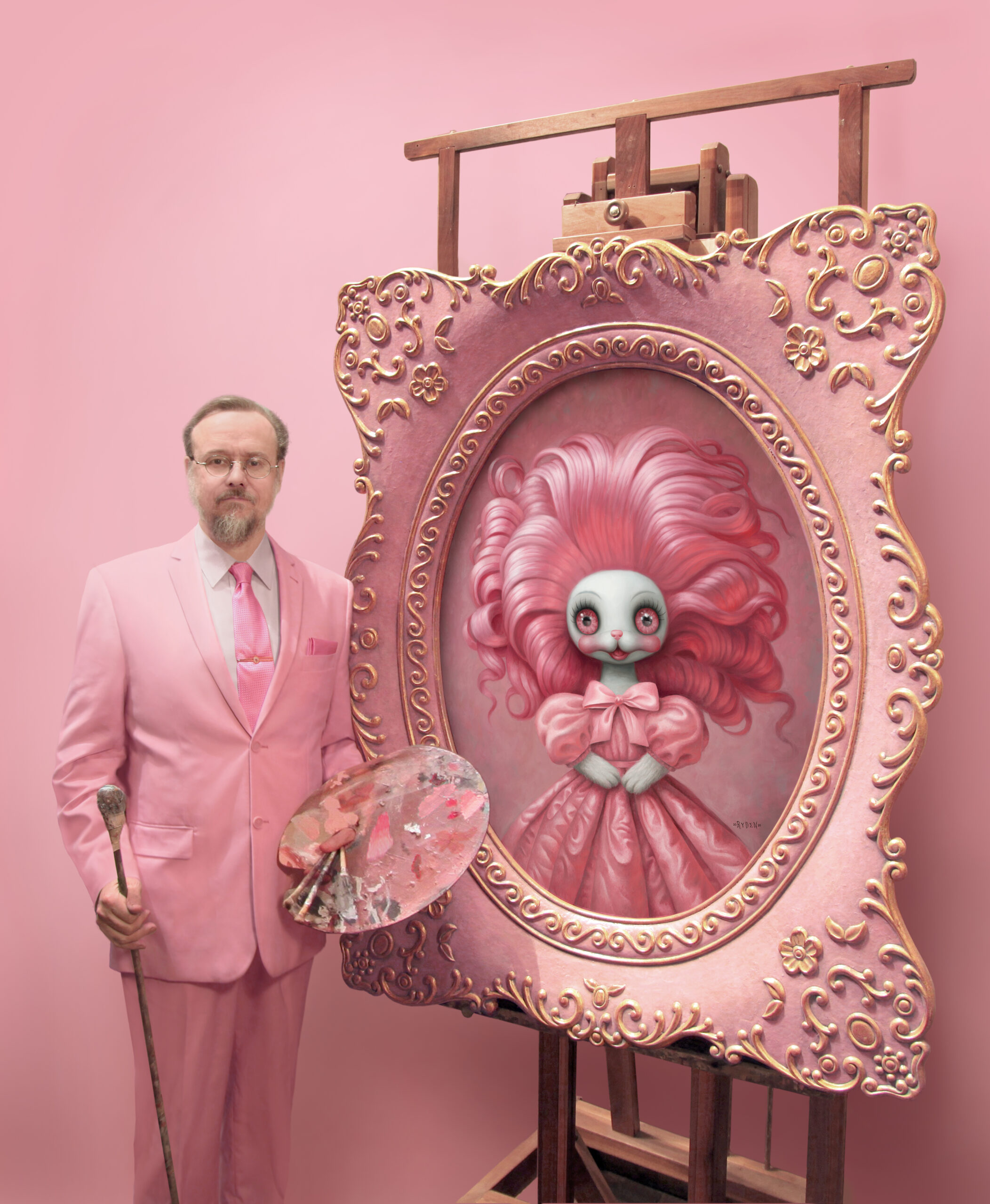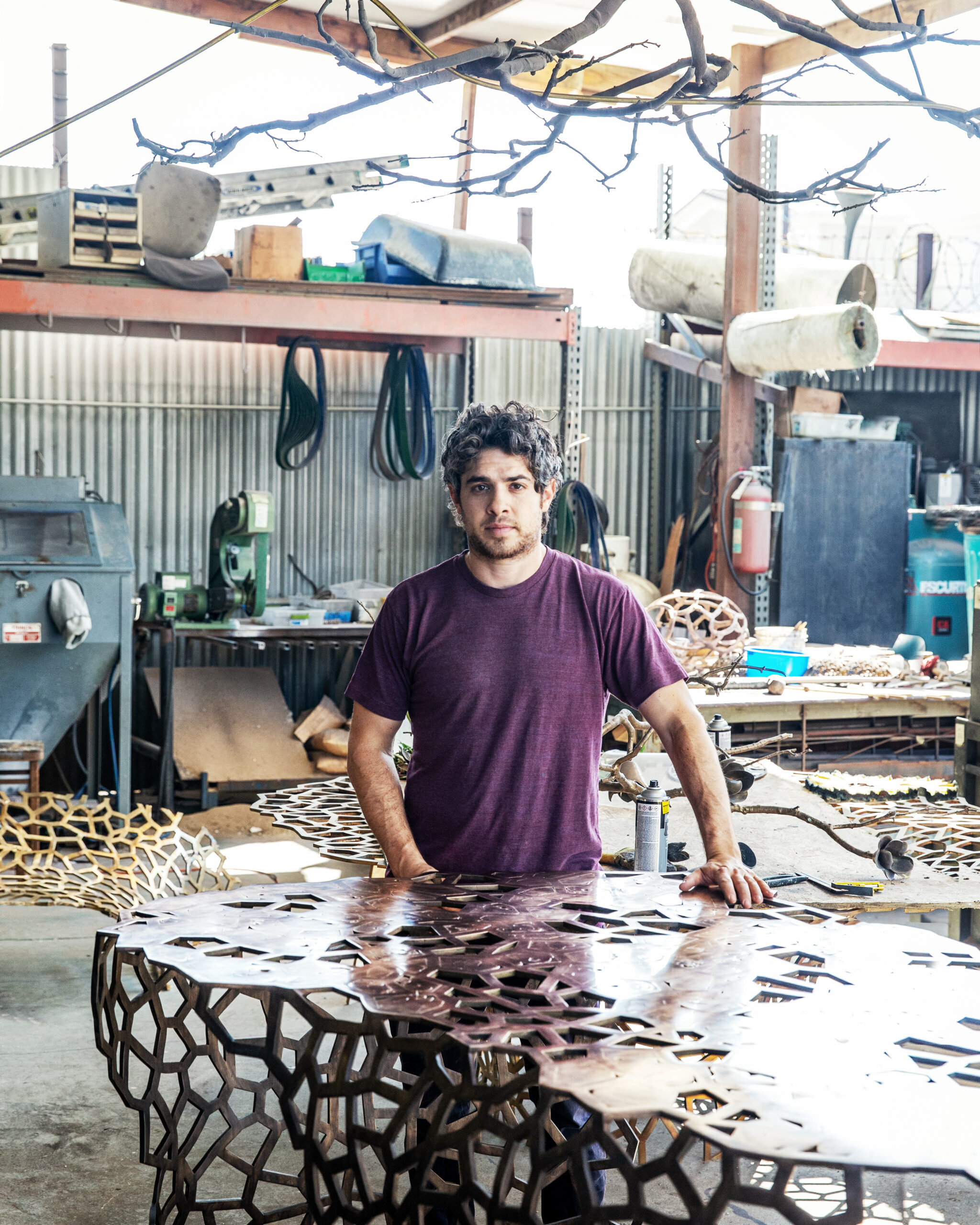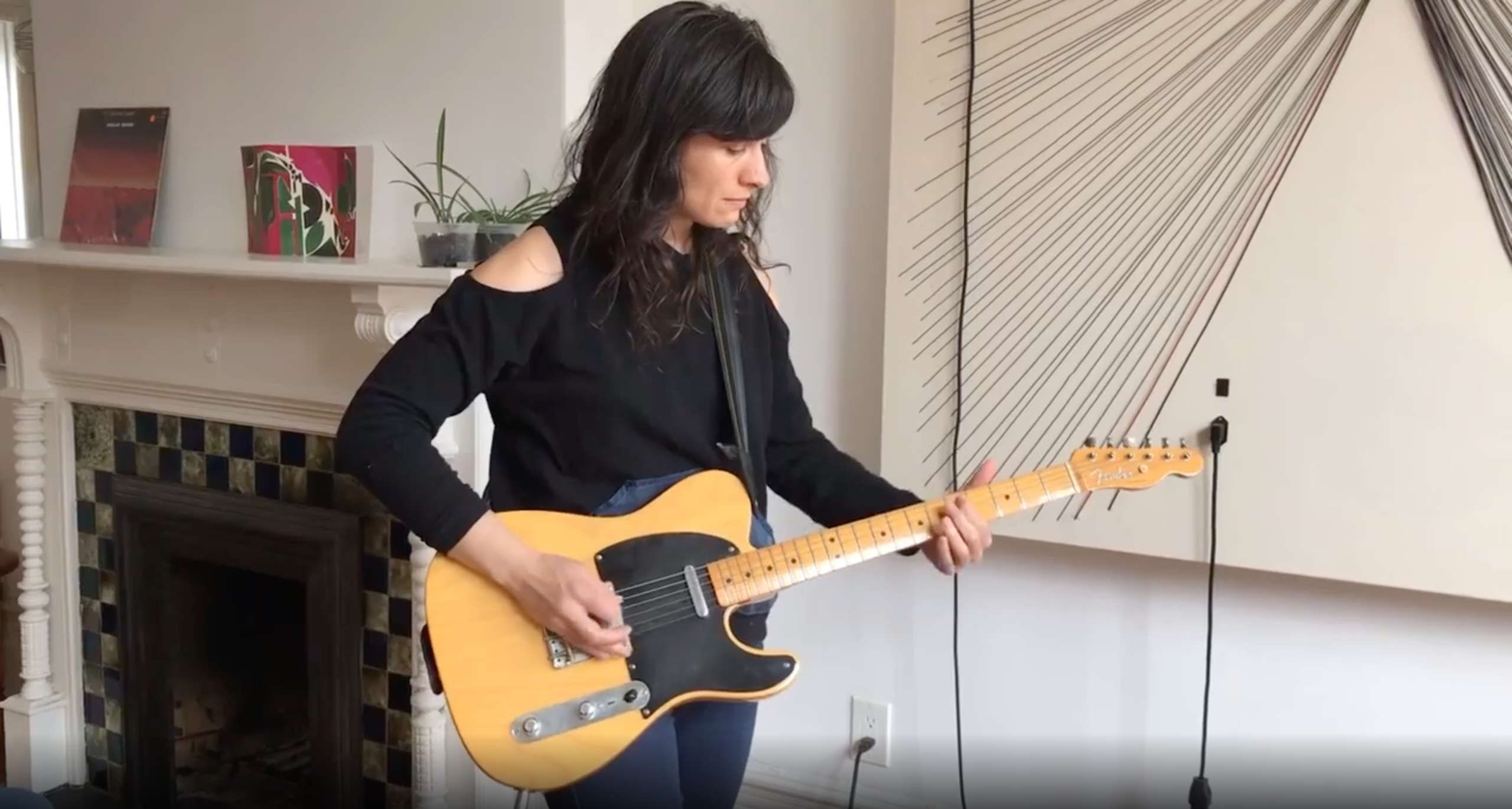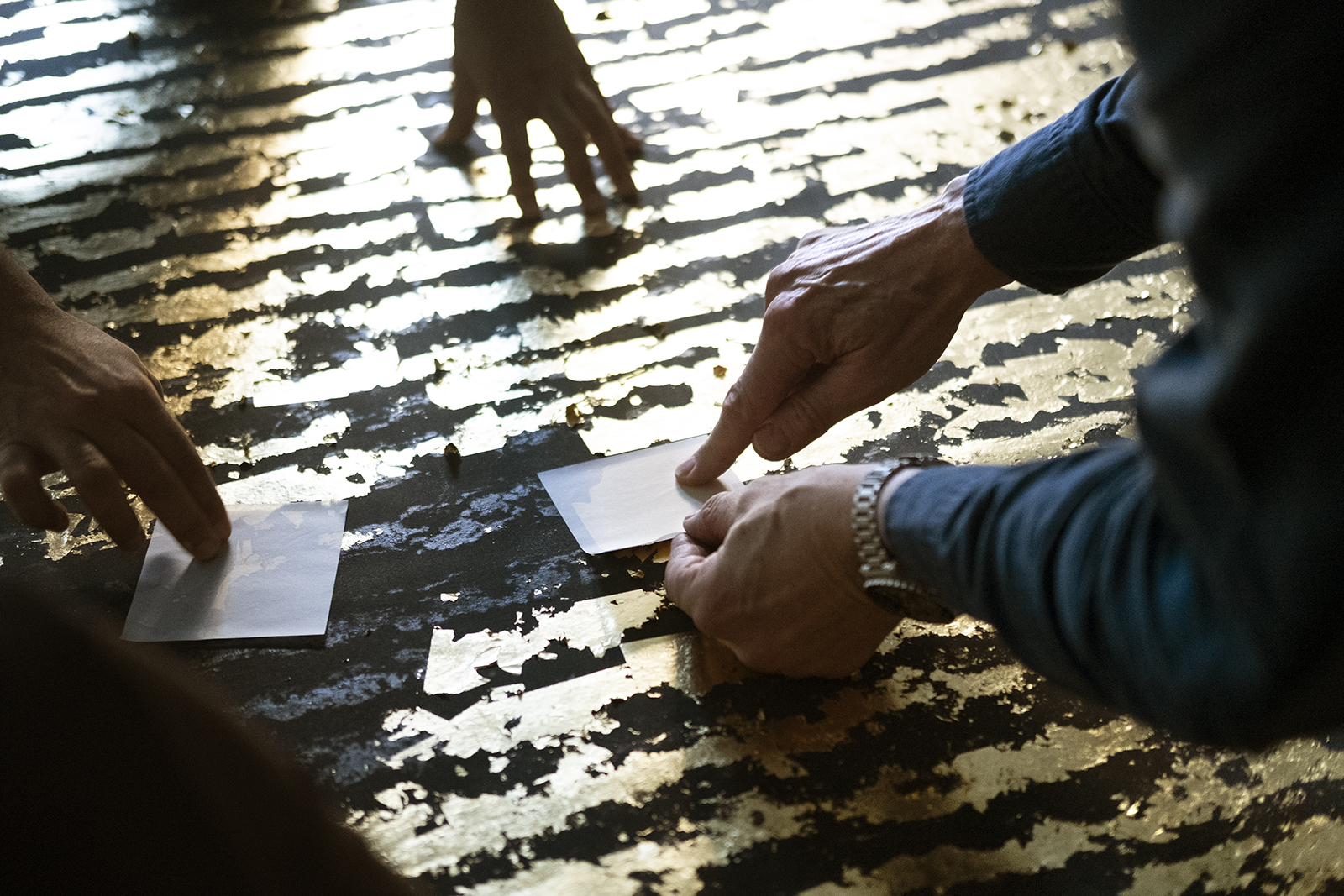For Alexander Harrison's first solo exhibition at Kasmin, Big World, Chicago-based writer Camille Bacon spoke with the artist to unravel the formal and spiritual intricacies of his latest body of work. Big World is on view through March 4, 2023, at 514 West 28th Street.
Camille Bacon
The paintings in Big World feel like windows or portals into a universe that runs parallel to the one we inhabit. I know you’ve long been interested in learning about the cosmos and physics. I’d love to hear you speak about how your interest in otherworldly and intergalactic happenings weaves its way into this exhibition.
Alexander Harrison
I see my paintings as another dimension, or a universe that feels like a fever dream as shown through my eyes. I always like to have cosmic symbols in my work, like shooting stars and moons, because that creates distance and curiosity, but I also like to create intimacy by painting the roots under the ground, for example.
We’re all bound to this earth, either by being nailed to a frame or being rooted in the ground or stuck in a web, or whatever. We’re all bound to this rock and we can all look up and wonder what’s out there.
CB
There’s a certain seductive quality to the paintings. When I first encountered them, I had the urge to peel the top layer back so I could step into the world you’ve imagined. And yet, that feeling of attraction was quickly followed by an uneasiness because while the paintings feature elements that are familiar to me, like grass or acorns or a humanoid foot, I was not sure what I would step into if I was hypothetically able to physically enter this “fever dream.” That ambivalence inspired a lot of speculation and I wonder if you could speak about whether that dual sense of seduction and uneasiness is part of what you were interested in eliciting for the audience?
AH
Yeah, 100%. This temptation or urge to want to partake in this beauty, the natural beauty of the landscape, but yet not knowing what’s around the corner, or what’s in the shadows, and yet, still wanting to propel yourself forward and answer to your curiosity no matter what. That’s kind of how I felt growing up in South Carolina. I’ve always wanted to exceed my boundaries, to move far away from my upbringing and stretch myself to see what I was capable of. That’s kind of what the foot painting, Land of Infinite Wonders, represents.
I left the cul-de-sac I grew up in. It’s called The Goldmine and it’s very much like a circle. The circle was full of my family and loved ones. But once I left the circle there was an uneasy feeling because I didn’t know what was out there yet or what I would encounter. So I like putting that feeling in my paintings.
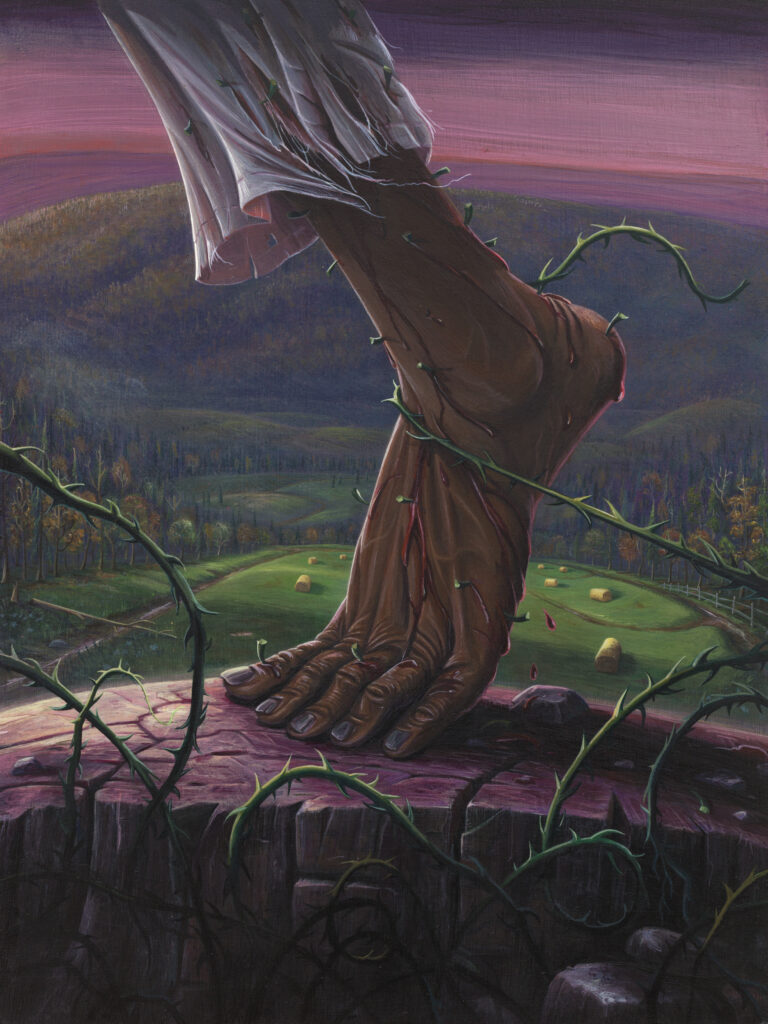
CB
Has your practice been part of what imbues you with the confidence needed to continue exploring, both within the realm of painting but also in life more broadly, regardless of what you might find on the other side?
AH
My painting career has definitely helped with that feeling. Now I feel like I’m in the place where I want to move back down South. I have life experience and a different outlook on the world. I’m gonna go back and see how I’ve changed, how it’s changed and how I can use the tools I’ve learned here, down there.
CB
You’ve described the universe you’ve created in Big World as “lightly surreal.” I feel like that sensibility comes across partially through how you render light. Can you talk a little bit about that?
AH
That’s a hard question for me because, earlier in my practice, I used to plan my paintings out down to the hue and hex code. But now I almost paint intuitively. The paintings kind of come to me, so I feel like this quality of light kind of presented itself to me and is developing in my work. All of my work is lit by natural bodies, like the sun or the moon or stars, so that could be part of the quality of light too.
Painting is getting easier over the years, but there is a battle I have with each painting when it comes to being 75% done. I go through it every time with every painting. I’m getting better at knowing that the work is gonna come along if I just keep painting, if I just keep going. So, there’s always a little hump of sadness but once I break past that, then the quality of the light starts to come alive.
CB
I’m curious to hear you talk about the fact that every work in Big World features natural phenomena like flowers, butterflies, bats, spider webs, expansive fields, and blistering horizons. They buzz with a certain aliveness, almost as if these phenomena are personified by your hand and emerge as beings that can talk and think and feel.
Also, in paintings like It’s Alive, Hollow Acorn, and Moon Lite Doom, among others, natural phenomena like a spider web, an acorn and a flower, respectively, block the audience’s full optical access to what’s happening in the background, so they almost operate as “gatekeepers” of the world you’ve imagined. Because your compositional strategy so often obscures the background, I was urged to ask more questions of the work than I would otherwise. I think the paintings are demanding in that way, which I really appreciate.
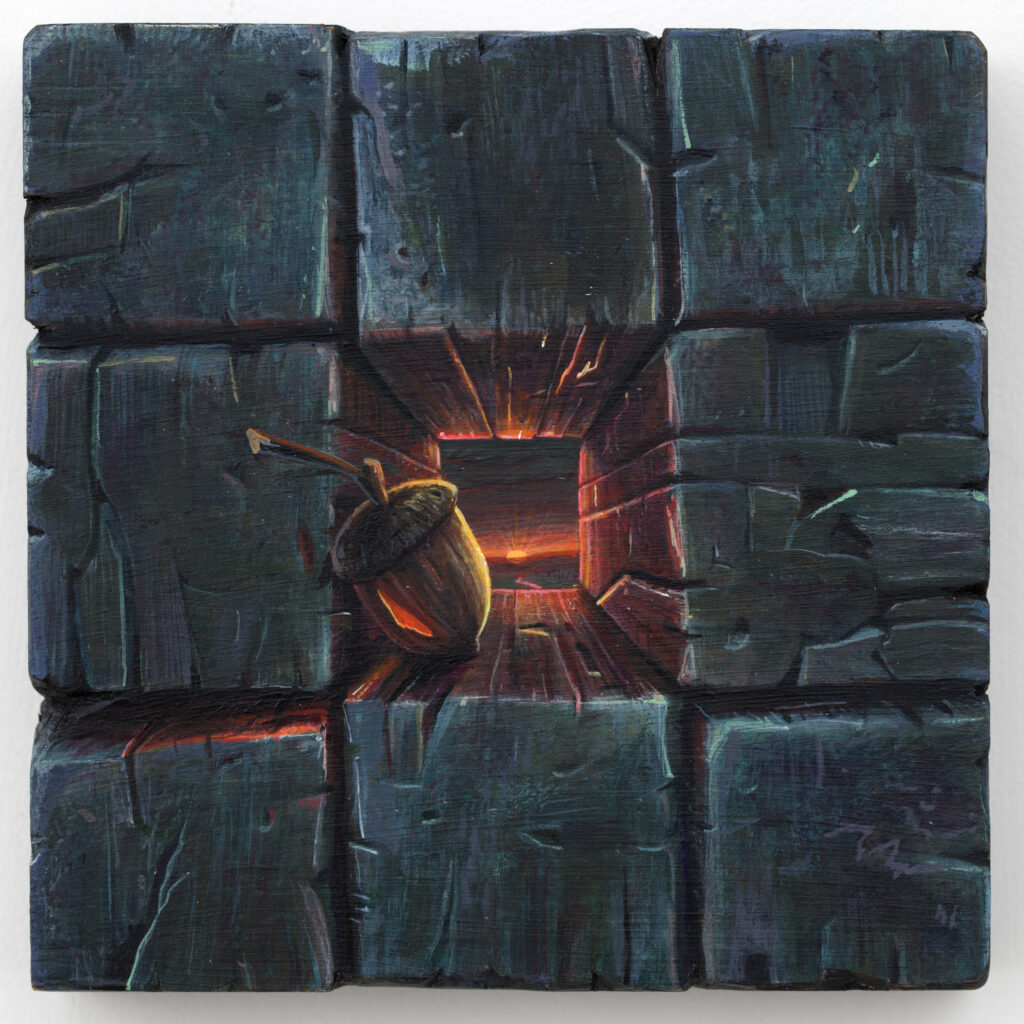
AH
I’ve always been into natural forms and the unpredictable quality of organic life. It’s part of that interesting thing of me having a dislike for landscape paintings or not taking them seriously. It’s funny how I gravitated back towards landscape paintings.
To your second point, it’s kind of what I was alluding to earlier about us all being bound somehow. I feel like some of it’s like “write don’t tell.” Even though I’m obscuring the background, there’s a lot there that you’re still getting and the curiosity is part of it for me.
I feel like we go through life a lot not seeing things clearly. I like to put gems in my paintings where if you’re looking long enough you’ll find it, even through all of the other visual mess.
My paintings are for me. I paint my paintings for me. Rendering details and creating little moments like that really brings me great joy. So, I love when a viewer takes their time to find these things.
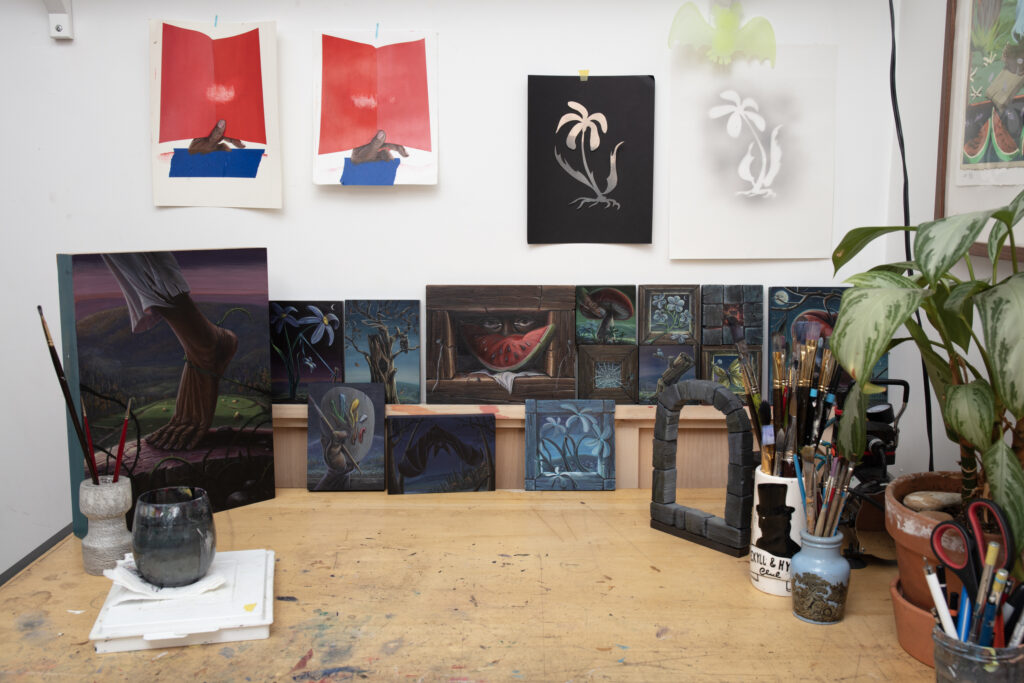
CB
The paintings in Big World range from 4×4’ 22×22’. Firstly, I wonder why you decided to paint on such a small scale for this show?
And on that note, when we last spoke, you talked about the visceral experience of painting such meticulous brush strokes on a small surface area and how there would be moments where you subconsciously curled your toes, or furrowed your brow, or held your breath in concentration to make sure that paint landed in the way you wanted it to. I wonder if you can speak to that physical experience as well?
AH
One part is my space. I am not working out of a studio because I have to be home for my new puppy. So, I started working small in the beginning because that was more viable and I thought that maybe I could figure out a studio situation or clear out my room a little bit so I could nail some bigger surfaces to the wall. But, I started really enjoying working small and getting close to the painting where my nose is almost touching the board. That is my favorite part.
I’ve noticed I say to myself, “I am a painter. I love painting, I love what I do” most often when I’m there holding my breath and laying these details down. I feel like those moments are the most tedious and most physically demanding part of the painting, but also are my favorite parts, like I said before.
CB
Maybe those moments where you’re holding your breath and marveling privately over what you’re doing are also the times when you get to have your own special intimacy with the paintings that the audience will never be privy to. Hearing you speak, it almost feels like your capacity to lean into those moments is an expression of care for what you are doing.
AH
I agree with that. And also, once my paintings leave my studio it’s hard for me because I feel like they don’t photograph well. All that fine detail doesn’t show up, which is a shame because we live in a digital age.
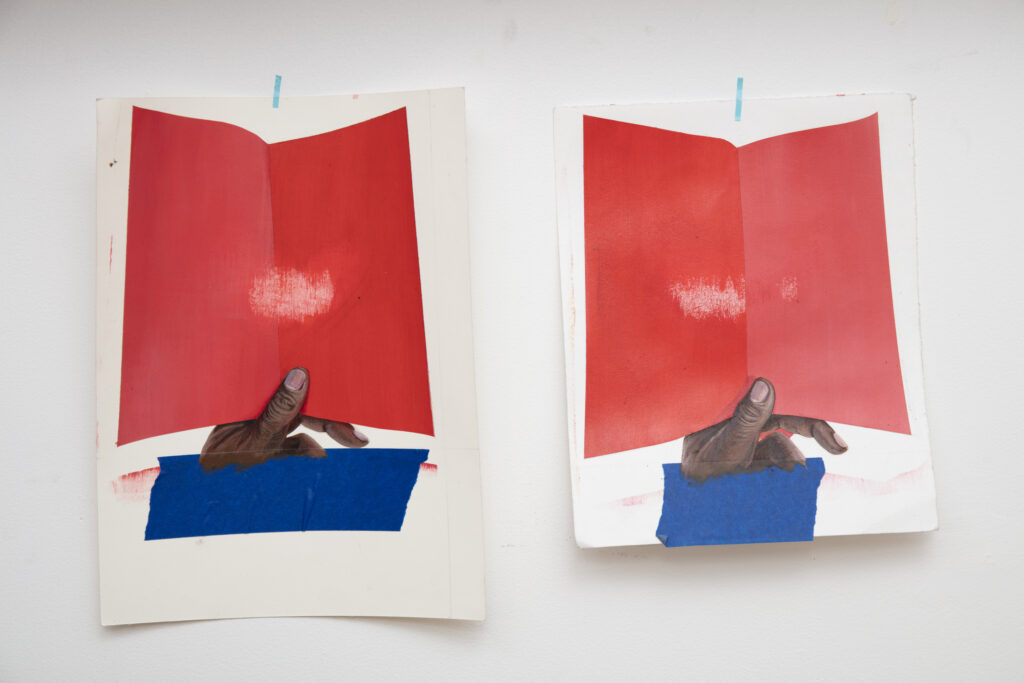
CB
Yeah, absolutely. I can imagine the texture of the panels you paint on being another thing that the photographic lens fails to render fully.
AH
Working on panel has its own set of challenges. I work with acrylic and I feel like both the paint and the panel can be really unforgiving. When you’re working on panel and you lay down a layer of paint that’s a little too thick or that is unplanned and you want to take it away, you can’t always just paint over it because it leaves a trace impression. So, I have to do a lot of fine sanding. I’ll paint for the day and then I’ll sand it down to get more character and then the next day I’ll paint over it again. It’s just like a give and take process.
I also have a whittling kit and I started using it to shape the sides of the surfaces for this show. I really enjoyed that. That was something I had to learn how to integrate into my work without it being too distracting. I wanted a way to pull the viewers in further and I feel like I couldn’t do that with canvas, so I think panel is my material of choice, despite the challenges. It pushes me to become a more skillful painter. I haven’t gone that deep with whittling or exploring the edge with a larger piece yet but I would love to make a fully immersive piece one day, like Monet’s Water Lilies.
CB
The paintings feel packed with potential energy, which is also part of what not only drew me in, but also enticed me to stay. There’s a sense of suspension in the sun that’s about to drop below the horizon in Hollow Acorn or in the leaves falling in Down by The Old Oak, for instance. That suspension reminded me, again, of what you said about the urge to break past your own limits.
AH
Through my practice I’ve been able to reach my younger self’s dream with my drive, determination and help from my family and some amazing teachers. Now, I have to prove to myself that I can exceed my limitations even more, grow from where I am currently and see where my work takes me.
I feel like I’m at a crossroads with my life. I’m in the midst of moving out of New York. I’m in need of a shift and I’m wondering what the change of scenery when I go back to the South will do to my work. I’ll have more time with my family and these landscapes I grew up with. It will be fun to get into plein-air painting and maybe go back to my grandpa’s farm. I feel like I have been painting from a distance and I’m ready to bring it back to center.
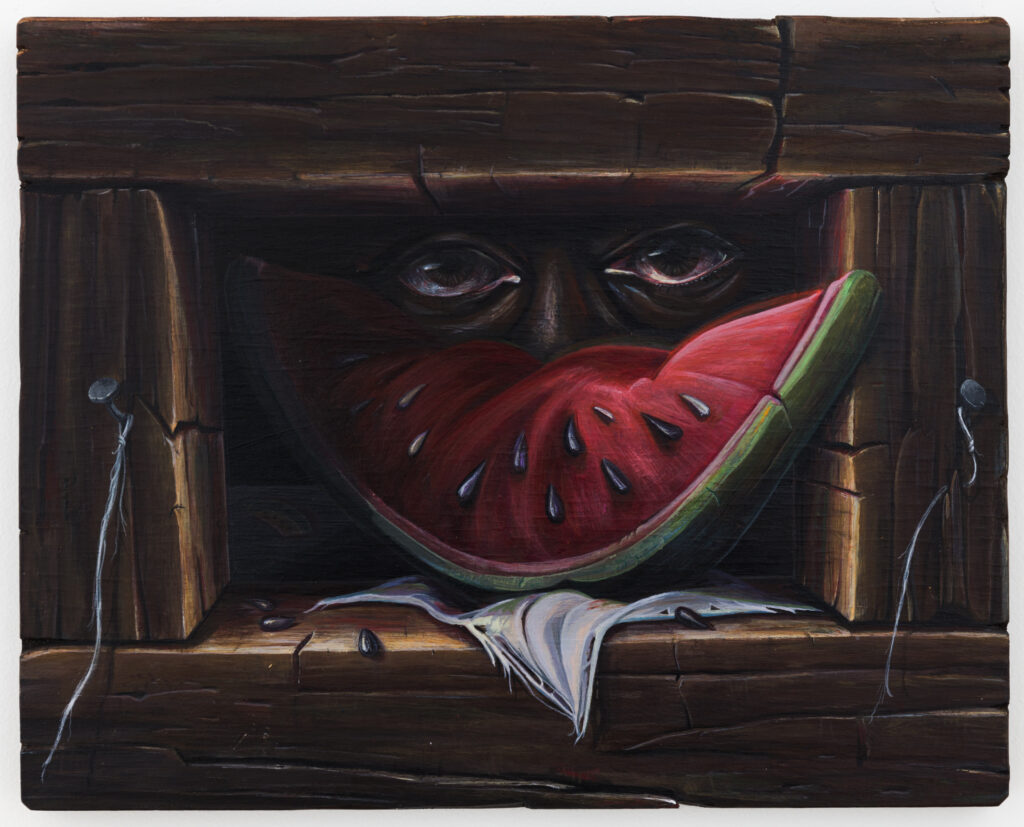
Camille Bacon is a Chicago-based writer who is building a “sweet black writing life” as inspired by the words of poet Nikky Finney and the infinite wisdom of the Black feminist tradition more broadly. Her work has appeared in Frieze, Cultured Magazine, Studio Magazine, Momus and Burnaway, among other outlets. She currently manages McArthur Binion’s studio in Chicago, IL and formerly held positions at GRAY Gallery, Chicago, IL, and The Studio Museum in Harlem, New York, NY.

